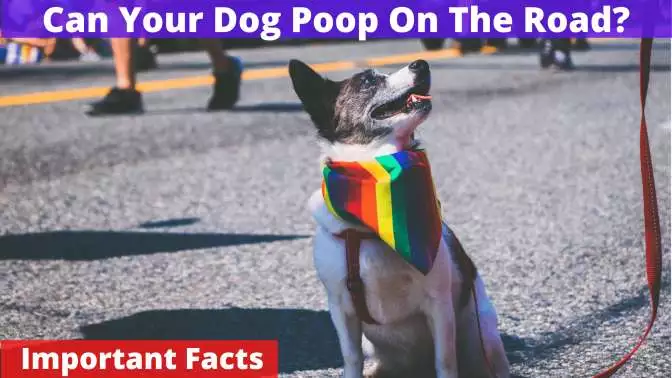Hey there, fellow dog parent! Have you noticed that sometimes your furry friend is panting up a storm, while other times they’re not panting at all? It’s a common concern, and we’re here to help you understand what’s going on with your pooch.
First things first, it’s important to know that some dogs don’t pant as much as others. They may use other ways to cool their bodies, such as drinking water or finding a shady spot to rest. However, if you notice that your dog isn’t panting and seems lethargic, there could be other reasons behind this behavior.
Lack of exercise, distress, and pain are all potential factors that could be causing your dog not to pant. If you notice that your dog isn’t puffing like usual, consider taking them for a walk or giving them some exercise to get their blood flowing. But, if the behavior persists or you’re concerned about your pooch’s health, it’s always wise to consult a veterinarian.
In this article, we’ll explore why your dog might not be panting like other dogs and provide you with some helpful tips and tricks on how to keep your furry friend healthy and happy. With a little bit of knowledge and some careful observation, you can ensure that your pooch is feeling their best and enjoying their time with you to the fullest.
So, let’s dive in and find out why your pooch isn’t panting like other dogs!
Why do some dogs don’t pant?
If you see your pooch’s pants, it means that he is feeling really hot. Unlike humans, dogs don’t have very effective sweat glands. They mainly dissipate heat through panting and sweat glands in their paws.
But if he is not panting, should you really worry? Let’s find out.
Here are 4 reasons why your dog might not be panting.
1. Not feeling hot.
The most straightforward reason behind your pooch, not panting can be that he is not hot enough to pant and cool down his body. Even we don’t sweat all the time, simply like that he should not pant all the time.
Maybe he is panting while active, like during running and playing, but you simply miss that.
2. He is using other ways to cool his body.
Although sweat glands are not prominent in dogs, they have well-developed sweat glands in the footpads.
Maybe your pooch is cooling his body by sweating through paws. Therefore, he doesn’t need to pant to cool his body.
You can simply check his paws and check whether he is sweating.
3. Not getting enough exercise.
Our body needs to be active in order to produce heat and sweat or pants. If your pooch is always indoors and is not very active, he will not feel very hot. Therefore, he is not panting like other dogs.
4. Rapid breathing is enough.
Have you ever seen that your pooch is rapidly breathing? Raid breathing can also quickly cool his body by evaporating heat. This rapid breathing can occur through his nose or his mouth.
However, raid breathing without panting can indicate other changes in his body. Stay with us to find out what it means that your pooch is rapidly breathing?
Is it normal for your dog to not pant?
If your pet is calmly resting or taking a nap, it is normal for him not to pant. Healthy dogs do not need to pant all the time unless they come from their routine walks or perform some other type of physical activity.
They also pant when they are excited or happy as well. Unless he is not active, he does not require to pant as he is not that hot.
He can eliminate his heat through the sweat glands of footpads and rapid breathing.
Overheating is another reason for your dog not to pant. Overheating can cause your pet to dehydrate very quickly. When your pooch is overheated, he will breathe very rapidly but not pant.
There are numerous reasons for getting overheated. Let’s find out more about overheating at the end of this article.
Should dogs pant all the time?
Let’s find out why dogs pant. We humans sweat through our skin and maintain our body temperature. However, dogs do not have a lot of sweat glands on their skin.
Therefore they cannot sweat. How can they dissipate heat from the body and maintain their body temperature?
There are some sweat glands present in the footpads and ear canals. They can sweat through them. Other than sweating, they try to cool down their body by panting.
They simply inhale air from the nose and mouth and evaporate the mucus in the upper respiratory tract and expel air through the nose or mouth.
This happens only if your pet’s body temperature is higher than normal and wants to cool his body. Therefore, you should know your dog doesn’t have to pant all the time. Here are a few instances your dog can pant.
1. Heat.
As we know, panting is a way of cooling the body. When your pet feels really hot, he will pant. The intensity and the duration of panting can change depending on his requirement.
2. When doing exercises.
After a long walk or playing with you, your pet’s body temperature rises. In order to bring the body temperature to be normal, he will require the expelling of heat from the body.
With other mechanisms like sweating, he might pant as well. If he exercised for a long time, he would show panting, but he might not significantly pant if he didn’t exercise a lot.
3. Excitement.
Dogs are quickly excited by the things they love. When they see your familiar face or meet a new friend, they get excited when you treat them with their favorite treat.
They wag their tails and pant. Usually, this panting is shallow but rapid.
4. Obesity.
Obese dogs tend to pant more than thin ones. The reason is the back fat of the neck can press against the throat.
This can compress their airways, making it difficult for them to breathe. So as compensation for that, they tend to pant
5. Heatstroke.
Heatstroke is different from just heat. Heatstroke is an emergency situation. Dogs will pant heavily.
Stay tuned to find out what causes heat stroke and its symptoms.
Suggested Reading: Why does your dog pant after eating a bully stick?
What do you have to do if your dog doesn’t pant?
If you are really worried that your pooch is not panting at all, there are a few things you can try to make him pant.
1. Exercise.
We now know that your pet needs to feel hot in order to pant. Lack of exercise can cause him not to pant. If your pet likes to stay indoors and doesn’t go out with you a lot, you can start a daily routine with him with some interesting physical activities.
An afternoon walk is always an excellent option to keep him active and healthy. Take him out to the nearest park, and do other physical activities.
When he is energized, his body temperature increases. Therefore he would have to either sweat or pant. Healthy dogs pant around 10 minutes after vigorous exercise.
Check whether he is panting after physical activities. If he does, you can be sure he is doing fine.
2. Ask your veterinarian.
If you have never seen your dog’s pants, it is always good to contact your vet and know why. He can explain to you if there are other remedies you can try or whether your pet has a special reason not to pant.
Things to be aware of.
Although we notice panting in our pet when we see him do it through the mouth, there are other ways of panting. Mainly there are three ways of panting in dogs.
- Inhaling and exhaling through the nose.
- Inhaling through nose, exhaling through nose and mouth.
- Inhaling through nose and mouth and exhaling through nose and mouth.
What is over panting?
Panting than it is required and doing it at times other than after vigorous exercise or feeling hot is something you should worry about.
Panting than the normal requirement is an indication of the following;
- Heatstroke.
When your pet’s body temperature increases to a very high level than average, it can lead to heatstroke. This condition can be very critical if not treated with emergency veterinary care.
What can cause your pet to have a heatstroke?
This can happen on scorching and humid days. If your pet is playing outside on scorching days, never forget to provide him a shady place to rest and enough water to keep him hydrated. If not, he can get extremely hot, leading to a heat stroke.
Another mistake made by pet owners is leaving the pet in the car or a closed space for a long time during a sweltering day. Never do this, as it is a typical instance that can lead to heatstroke in dogs.
Symptoms of heatstroke?
- Heart failure.
- Cushing’s syndrome
- Pain and stress.
- Laryngeal paralysis.
- Anxiety: are some other reasons for excessive panting.
The most common symptom is excessive panting. This is deadly as it can lead to dehydration.
Other symptoms include restlessness, drooling, not responding to you, dehydration, and loss of consciousness.
What should you do if your pet is having a heat stroke?
Take him to the closest veterinarian. This is a veterinary emergency. Attend it as quickly as you can.
Until you reach the vet, remove him very quickly from the hot place and open the vehicle’s windows during the visit. If he is conscious and can drink water, provide him water but do not force him to drink.
What is rapid breathing?
Rapid breathing is different than normal panting or excessive panting. The average breathing rate of an adult dog is 10-30 breaths per minute. That value gets increased up to 10 times during rapid breathing.
Asthma, bacterial and fungal infections in the nasal cavity, laryngeal paralysis, anemia, heatstroke, nausea, and pain can cause rapid breathing in your pet. This can also be considered an emergency veterinary situation. Consult your vet as soon as possible if you observe noticeable rapid breathing in your pet.
Conclusion.
The article briefs about the abnormal panting patterns of your pet and how to act during those times.



